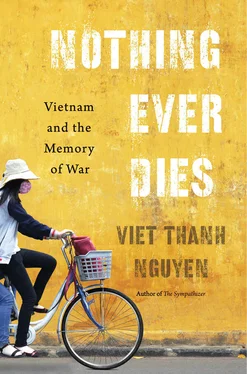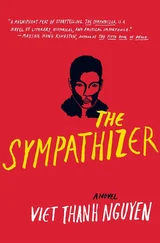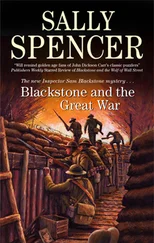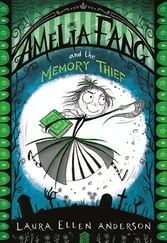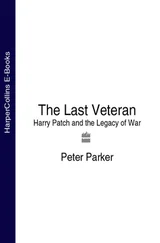Yamashita, Karen Tei. The I-Hotel . Minneapolis: Coffee House Press, 2010.
Yang, Kao Kalia. Artist’s talk at the “Southeast Asians in the Diaspora” Conference, University of Illinois, Urbana-Champaign, April 16, 2008.
______. The Latehomecomer: A Hmong Family Memoir . Minneapolis: Coffee House Press, 2008.
Yoneyama, Lisa. Hiroshima Traces: Time, Space, and the Dialectics of Memory . Berkeley: University of California Press, 1999.
Yoon Je-kyoon, Ode to My Father . Seoul: JK Film, 2014.
Young, James. The Texture of Memory . New Haven, CT: Yale University Press, 1993.
Young, Marilyn Blatt. The Vietnam Wars . New York: HarperCollins, 1991.
Yui, Daizaburo. “Perception Gaps between Asia and the United States of America: Lessons from 12/7 and 9/11.” In Crossed Memories: Perspectives on 9/11 and American Power , edited by Laura Hein and Daizaburo Yui, 54–79. Tokyo: Center for Pacific and American Studies, The University of Tokyo, 2003.
Zelizer, Barbie. Remembering to Forget: Holocaust Memory through the Camera’s Eye . Chicago: University of Chicago Press, 1998.
Žižek, Slavoj. How to Read Lacan . New York: W. W. Norton, 2007.
After writing a book about being haunted by memory, it is a pleasure to conclude with remembering what I owe to others. To begin with, various institutions granted significant financial assistance that allowed me time to research and write, starting with the University of Southern California and its consistent support for my travel and sabbaticals. A Suzanne Young Murray Fellowship from the Radcliffe Institute for Advanced Study, and another fellowship from the American Council of Learned Societies, gave me the opportunity to think through difficult problems. The Southeast Asian Summer Studies Institute funded my study of Vietnamese at the University of Wisconsin at Madison, an experience that I furthered through trips to Southeast Asia that were supported by a Luce Foundation Fellowship from the Asian Cultural Council, a Grant for Artistic Innovation from the Center for Cultural Innovation, and a grant from the Center for International Studies at USC. An Arts Writers Grant from Creative Capital and the Warhol Foundation encouraged me to write about the role that visual culture played in memories of the war, while the Japan — United States Friendship Commission afforded me the chance to present early arguments before Japanese audiences. Many years later, I returned to Asia as a fellow of the Asia Research Institute at the National University of Singapore, which provided a stimulating environment for sharing the final version of this book.
Unlike the audience at ARI, most people who heard me talk about this book listened to my ideas in more nascent form. I appreciate their generosity and intellectual engagement. From the most recent to the earliest, the individuals and institutions who invited me to discuss my work are: Eliza Noh, Tu-Uyen Nguyen, and California State University, Fullerton; Wafa Azeem, Kent Baxter, and California State University, Northridge; Prasenjit Duara, Chua Beng Huat, and the Asia Research Institute; Bruce Solheim and Citrus College; Mayumo Inoue and Hitotsubashi University; Elaine Kim and the Chinese American Literature Research Center at Beijing Foreign Studies University; Akitoshi Nagahata and Nagoya University; Otto Heim, Kendall Johnson, and the University of Hong Kong; Hyungji Park and Yonsei University; Youngmin Kim and the English Language and Literature Association of Korea; Kent Ono, Gordon Hutner, Mimi Thi Nguyen, Fiona I. B. Ngo, and the University of Illinois at Urbana-Champaign; Hsinya Huang and National Sun Yat-Sen University; Chih-Ming Wang and the Institute of European and American Studies at Academia Sinica; Guy Beauregard and National Taiwan University; Lawrence Buell and Harvard University; Yuan Shu and Texas Tech University; Viet Le, Yong Soon Min, and the Arko Art Center of Seoul; Edward Park and Loyola Marymount University; Frederick Aldama and Project Narrative at The Ohio State University; Stefano Catalani and the Bellevue Arts Museum; Yasuo Endo and the Center for Pacific and American Studies at the University of Tokyo; Satoshi Nakano and the Center for the Study of Peace and Reconciliation at Hitotsubashi University; Juri Abe, the Japanese Association of American Studies, and Rikkyo University; Celine Parreñas Shimizu and UC Santa Barbara; Lan T. Chu and Occidental College; Iris Schmeisser, Heike Paul, and the University of Erlangen-Nuremberg; the Center for Black Studies and UC Santa Barbara; Charlie Bertsch and the University of Arizona; Ruth Mayer, Vanessa Künnemann, and the University of Hannover; and Rachel Lee and UCLA.
Although I traveled far and wide to discuss the book in progress, much of it was shaped at my home campus of USC, where the graduate students of my two seminars on War and Memory challenged me to sharpen my thinking on that topic. My research assistants, Tiffany Babb, Yvette Marie Chua, Ninalenn Ibrahim, and Cam Vu (as well as Kathleen Hale at Harvard), proved invaluable as they took care of things small and large. In the English Department, Joseph Boone has been a great friend and supportive department chair, while Emily Anderson gave me a space to share my work with colleagues. Two of them, John Carlos Rowe and Rick Berg, pushed me to think more radically. At the book’s completion, my dean, Peter Mancall, provided a subvention that paid for many of the images. And while I took a long time to write this book, it would have taken even longer without Heather James and Dorinne Kondo, whose generous advice helped me greatly in winning fellowships. Finally, I am delighted to have worked with Janet Hoskins to develop our concepts about transpacific studies, many of which inform this book.
In Phnom Penh, Kok-Thay Eng of the Documentation Center of Cambodia was generous with his time. So was Chuck Searcy of Project RENEW in Hanoi, and his colleague Ngo Xuan Hien in Dong Ha. My travels through Vietnam were enriched by the assistance of Tran Minh Duc and through my collaboration with photographer Sam Sweezy, who took several of the photos for this book. I am grateful to him for their use, as I am to all the other artists, photographers, and institutions who are listed in the credits. I am especially thankful to Andrew Kinney and the staff at Harvard University Press for ushering this book to publication, as well as to Zoë Ruiz, whose editing was crucial.
If these acknowledgments have run on for a considerable length, that reflects the thirteen years I spent accruing debts as I worked on this book, and the many years before that during which I engaged with war, memory, and art-making. Through more than two decades, I have benefited immeasurably from a community of like-minded scholars and artists devoted to Southeast Asia and its diasporas, including Chuong Chung, Tiffany Chung, Yến Lê Espiritu, Dinh Q. Lê, Viet Lê, Nguyen Qui Duc, Isabelle Thuy Pelaud, Thy Phu, and Cathy Schlund-Vials. Among these scholars and artists, the most important interlocutor and collaborator has been my partner, Lan Duong. Without her patience and support, this book would not exist. Neither would our son, Ellison, whose life has left its subtle imprint on all that I do and write. While he will not grow up in a world without war, I hope that he will work for peace.
His grandparents, my father and mother, have known too many years of war. Their sacrifices for my brother Tung and me, as well as for our partners and children, have been enormous. Born in the 1930s in a poor northern village, they have traveled an immense distance in space and time from their homeland. My father and mother are the ones to whom I owe the most, and I dedicate this book, insufficient as it might be, to them.
Читать дальше
